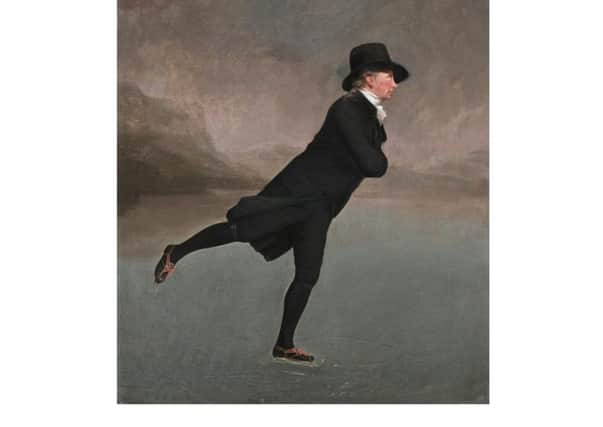5 of the most iconic paintings on display in Scotland


The Reverend Robert Walker skating on Duddingston Loch (1784)
by Henry Raeburn (1756 – 1823)
Perhaps the most famous of all Scottish paintings, Henry Raeburn’s masterpiece depicts Rev Robert Walker, a member of the first figure skating club in the world. The Edinburgh Skating club used to meet on either Lochend or Duddingston Loch, depending on which had frozen over. Walker’s father had been a minister in Rotterdam, meaning that, as a child, he had learned to skate on the Netherlands’ frozen canals.
Advertisement
Hide AdAdvertisement
Hide AdThe composition and subject matter of the painting are unusual among Scottish paintings. Raeburn shows Walker in the “travelling position”, with arms folded and leg extended. His stark black outfit contrasts strongly with the misty backdrop, and is reminiscent of 17th century Dutch art. The technical skill required to paint the ribbons on Walker’s skates, and the grooves carved into the ice, makes this painting particularly accomplished.
On display at the National Gallery of Scotland
Alexander Ranaldson Macdonell of Glengarry (1812)
by Henry Raeburn (1756 – 1823)
Raeburn’s portrait of Macdonell shows him dressed as the archetypal highland cheiftan, but the man behind the tartan was involved in the tragic Highland Clearances of the late 18th and early 19th centuries. Increasing rents and evictions in favour of sheep farmers forced many members of his clan to seek a new life in the New World.
His flamboyant behaviour and strong character, reflected in the exaggerated Scottish dress, were thought to inspire Walter Scott’s creation, chieftan Fergus MacIvor, in his novel, Waverley. During King George IV’s visit to Edinburgh, he made several appearances without prior consent, which made the event’s organisers furious.
On display at the National Gallery of Scotland
Children and Chalked Wall 3 (1963)
by Joan Eardley (1921-1963)
Joan Eardley has an enduring popularity among Scottish art-lovers. She studied at the Glasgow School of Art, and became fascinated by the lives of the children who lived in the deprived Townhead area. Painting these children helped her develop her own unique style, as she documented everyday scenes of urban life. The children depicted in this painting are members of the Samson family, who lived near her studio in Townhead. The elements of collage are meant to imitate graffiti, and the gold papers were probably sweet wrappers. The children’s affection for each other is shown in their body language, as is their youthful vulnerability.
On display at the Scottish National Gallery of Modern Art Two.
The Last of the Clan (1865)
by Thomas Faed (1826-1900)
Thomas Faed was a Scottish painter who was celebrated for his sentimental paintings of Scottish scenes. This painting concerns the Highland Clearances, which forced many crofters and tenant farmers to leave the country, as their small farms were replaced by sheep, or due to extreme poverty. Grief is etched on the faces of Faed’s subjects, including the horse. However, the fashionable young ladies with their up-to-date dresses are rather out of place. The perspective of the viewer is as if from a departing ship, looking back to the quayside.
When it was first displayed, The Last of the Clan was immensely popular. So much so, that the Royal Academy has to erect barriers to control the crowds.
On display at Kelvingrove Art Gallery and Museum
Christ of St John of the Cross (1951)
by Salvador Dalí (1904-1989)
Advertisement
Hide AdAdvertisement
Hide AdAlthough, as many of you know, Salvador Dalí was a Spanish artist, this painting is very much a part of Scotland’s national consciousness. However, this was not always so. It was first displayed in Glasgow in 1952, only one year after it was painted. Dr Tom Honeyman, the Director of Kelvingrove Art Gallery and Museum at the time, faced an outcry after his purchase of the painting. He defended Dalí’s work admirably, and a friendship began between him and the painter. Their letters are still stored in the National Library of Scotland.
The subject of the painting came to Dalí in a “cosmic dream”, and to him it represents “the nucleus of the atom”. A Hollywood stuntman was hung overhead so that Dalí could accurately depict the slanting angle of Christ’s body, which he had seen in his dream.
Christ of St John of the Cross was named as Scotland’s favourite painting in 2011, and continues to be popular among visitors to the gallery.
On display at Kelvingrove Art Gallery and Museum